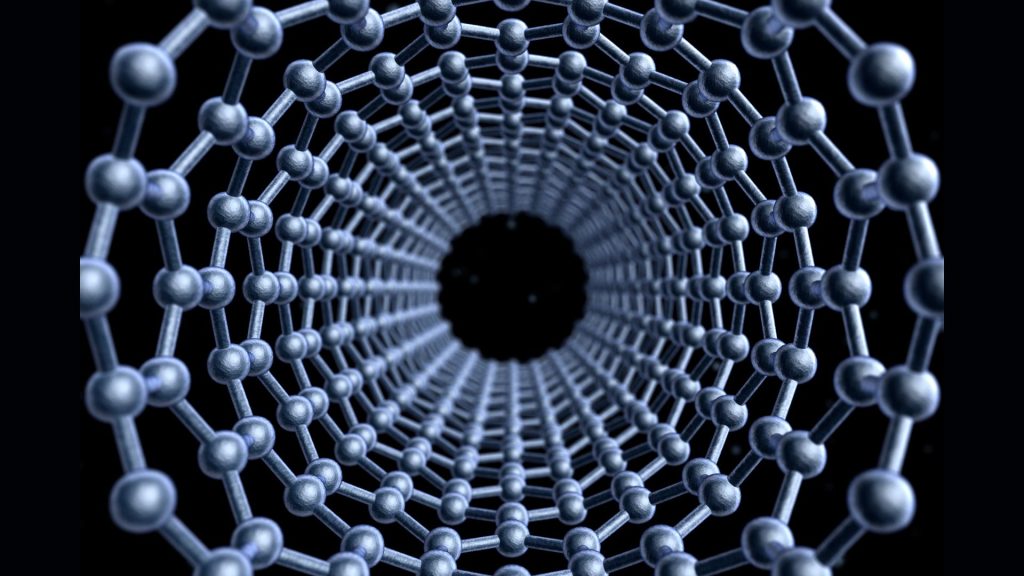Never seen before quantum state discovered in graphene could advance computing – Interesting Engineering

While frozen in place internally, electrons along the edges of twisted graphene move freely, creating a unique state of conductivity.a day agoa day ago2 days ago2 days ago2 days ago2 days ago2 days ago2 days ago2 days ago2 days agoan hour ago2 hours ago2 hours ago11 hours ago11 hours ago13 hours ago15 hours ago17 hours ago18 hours ago20 hours agoRupendra BrahambhattThis discovery could lead to more efficient electronics and better quantum computers. (Representational image)iLexx/iStockGraphene, also known as the wonder material, continues to surprise scientists. This time, it has revealed new quantum states. A team of researchers has found peculiar topological electronic crystals in twisted graphene layers.Their study highlights a special way to arrange electrons in graphene, where they freeze into a perfectly ordered pattern. Surprisingly, while staying locked in place, all the electrons spin together like ballet dancers performing synchronized pirouettes without moving.This unusual quantum behavior allows electric current to flow smoothly along the edges of the material while the interior remains non-conductive because the electrons are stuck in place. In the future, such quantum states can be utilized for the development of energy-efficient electronic devices and fault-tolerant quantum computing applications.Topology is the study of shapes and spaces that don’t change even if they are stretched, twisted, or deformed—without cutting or gluing. “An everyday example of topology is the Möbius strip—a simple yet mind-bending object. Amazingly, no matter how you try to manipulate the strip, you cannot untwist it back into a normal loop without tearing it apart,” the study authors note.A material exhibiting topology is of great importance because it has the uncanny ability to remain unaffected by external factors. Such a material can demonstrate robust quantum behavior, as its quantum states in such material are immune to small disturbances.For instance, topological electronic crystals like the one mentioned in the current study are quite special. In these unique crystals, electrons move in a very stable way, no matter if there are small defects or impurities in the material. What makes them special is that their stability comes from the material’s internal structure and not from outside influences like temperature or pressure. However, these crystals are rare because only certain materials have the right atomic arrangement to support topological electron behavior.The study authors began with two thin layers (flakes) of graphene, a material made of carbon atoms arranged in a honeycomb pattern. Normally, electrons in graphene move freely, similar to how they do in metals like copper.Next, they stacked the two graphene layers on top of each other but rotated one slightly. This small twist created an interesting pattern called a moiré pattern, where some carbon atoms from both layers were aligned perfectly, but others were misaligned.When electrons moved through this twisted structure, their behavior completely changed. “For example, the electrons slow way down, and sometimes they develop a twist in their motion, like the vortex in the water at the drain of a bathtub as it is draining out,” Joshua Folk, one of the study authors and a physics professor at the University of British Columbia (UBC), said.This behavior resulted in a strange electronic effect. Inside the material, electrons became frozen in place, making it act like an insulator. However, along the edges, electrons moved effortlessly, allowing electricity to flow without resistance.Generally, when electrons freeze and settle down such a structure is called the Wigner crystal. However, in this case, the rotational motion of electrons along the edges resulted in something different — the topological electronic crystal.“The rotation of the electrons in the crystal is analogous to the twist in the Möbius strip and leads to the remarkable characteristic of the topological electronic crystal never before seen in the rare cases where electron crystals have been observed in the past,” the study authors said.This rare discovery could contribute to the development of highly efficient electronic and quantum computing applications. The study is published in the journal Nature.Stay up-to-date on engineering, tech, space, and science news with The Blueprint.By clicking sign up, you confirm that you accept this site’s Terms of Use and Privacy PolicyRupendra Brahambhatt Rupendra Brahambhatt is an experienced writer, researcher, journalist, and filmmaker. With a B.Sc (Hons.) in Science and PGJMC in Mass Communications, he has been actively working with some of the most innovative brands, news agencies, digital magazines, documentary filmmakers, and nonprofits from different parts of the globe. As an author, he works with a vision to bring forward the right information and encourage a constructive mindset among the masses.a day agoa day agoa day ago2 days agoPremiumIE PROFollow
Source: https://interestingengineering.com/science/new-quantum-state-graphene





